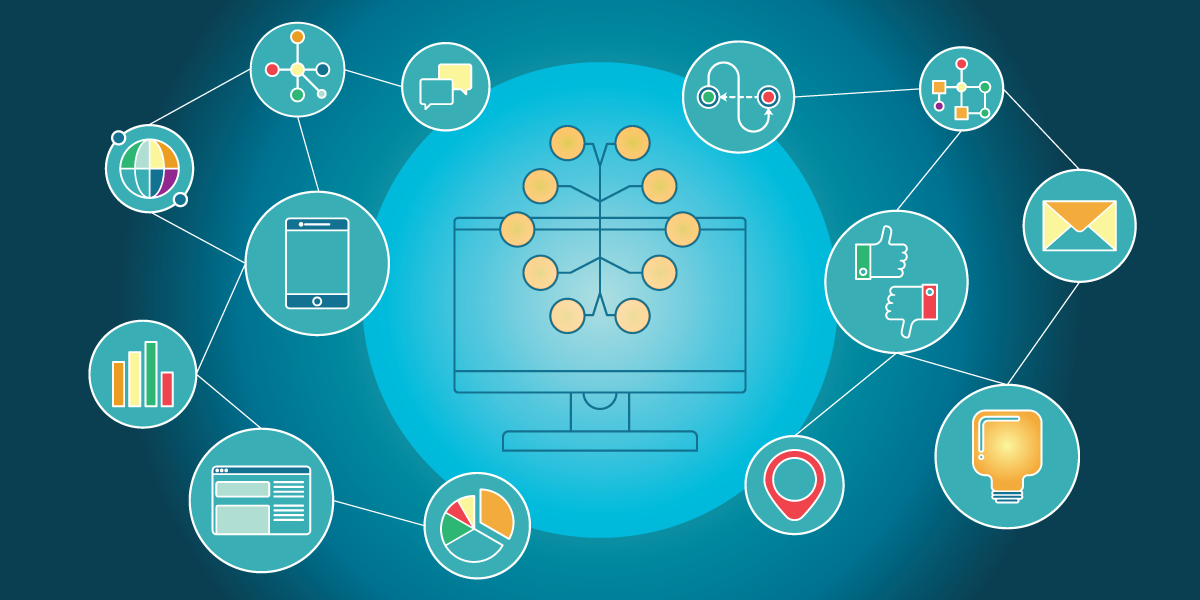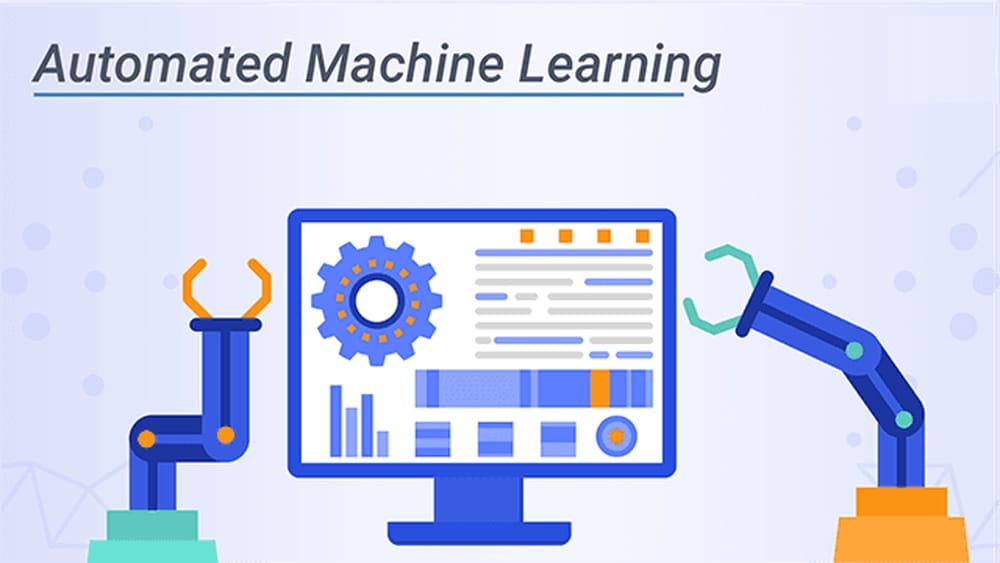Discover how Machine Learning and Automation revolutionize work, cut costs, and drive smarter, faster business performance.
By combining these two powerful technologies, you unlock the ability to automate complex processes that once needed constant human attention. If you want to discover how this dynamic duo can transform your work, boost efficiency, and open new opportunities, keep reading.
This article will break down the basics, show you real-world examples, and help you understand why machine learning and automation are game changers for your success.

Credit: softwareengineeringdaily.com
Machine Learning Basics
Machine learning is a key part of automation today. It allows computers to learn from data and make decisions without being told exactly what to do. Understanding the basics helps to see how this technology works in many industries. Four main types of machine learning guide how machines learn and improve over time.
Supervised Learning
Supervised learning uses labeled data to train models. Each example in the data has a known answer or label. The model learns to predict the correct output from the input data. For example, it can identify spam emails by learning from emails already marked as spam or not. This method is useful for tasks like classification and regression.
Unsupervised Learning
Unsupervised learning works with unlabeled data. The model finds patterns and structures on its own. It groups or clusters data points based on similarities without any guidance. For example, it can segment customers by their buying habits without knowing the groups in advance. This helps uncover hidden insights in data.
Semi-supervised Learning
Semi-supervised learning mixes both labeled and unlabeled data. It uses the small set of labeled data to guide learning on the larger unlabeled set. This approach saves time and effort in labeling data. It is helpful when labeling is expensive or difficult but some labels are available.
Reinforcement Learning
Reinforcement learning trains models through trial and error. The model learns by receiving rewards or penalties based on its actions. It aims to maximize rewards over time. This type is common in robotics and game playing, where decisions affect future outcomes. It helps machines learn strategies and improve performance.
Automation In Industry
Automation in industry transforms traditional manufacturing and production processes. It uses machines and technology to perform tasks without human help. This shift improves speed, accuracy, and safety in factories. Machine learning plays a key role in making automation smarter and more flexible. It allows systems to adjust and improve over time, reducing errors and downtime.
Adaptive Automation Systems
Adaptive automation systems use machine learning to change their actions. They can adjust to new conditions without needing manual changes. This helps factories handle different products and unexpected issues. These systems learn from data and improve their performance automatically. It means less stoppage and more efficient production lines.
Process Optimization
Automation helps optimize industrial processes by analyzing large amounts of data. Machine learning finds patterns that humans might miss. It suggests the best ways to use resources and reduce waste. This leads to lower costs and higher quality products. Factories can run smoother and faster with optimized processes.
Continuous Learning
Continuous learning allows automation systems to keep getting better over time. Machine learning models update themselves with new data. This means the system adapts to changes in the environment or materials. It helps maintain high performance without constant reprogramming. Continuous learning supports long-term success in industrial automation.
Automl And Its Role
AutoML, or Automated Machine Learning, simplifies the complex process of building machine learning models. It reduces the need for deep technical skills by automating tasks from data handling to model creation. This allows more people to use machine learning in their projects and businesses.
AutoML plays a crucial role in making machine learning accessible and efficient. It speeds up workflows and helps deliver results faster. Understanding its role helps appreciate how technology advances can assist in everyday problem-solving.
Automating Ml Workflows
AutoML automates repetitive tasks in machine learning workflows. It handles selecting algorithms, tuning parameters, and validating models. This automation saves time and reduces human error. Teams can focus more on interpreting results and less on manual setup.
Data Preparation To Deployment
From cleaning data to deploying models, AutoML covers the entire pipeline. It preprocesses raw data, manages missing values, and selects important features automatically. After training, AutoML helps deploy models into real-world applications quickly. This streamlines the path from data to actionable insights.
Benefits Of Automl
AutoML lowers the barrier to entry for machine learning projects. It accelerates model development and improves accuracy through automated tuning. Businesses save costs by reducing the need for expert data scientists. AutoML also promotes consistency and repeatability in workflows, ensuring reliable outcomes.

Credit: innovationcloud.com
Applications Across Sectors
Machine learning and automation have found wide use in many industries. They help businesses work smarter and faster. These technologies analyze data, spot trends, and improve processes. The result is better decisions and saved time.
Different sectors apply machine learning and automation in unique ways. Some focus on customer insights, others on system safety or equipment care. The flexibility of these tools makes them valuable across fields.
Customer Segmentation
Machine learning divides customers into groups based on behavior and preferences. This helps companies target their marketing and offers more effectively. Automation speeds up this process by analyzing large data sets quickly. Businesses can then tailor products and services to each segment.
Anomaly Detection
This application uses machine learning to find unusual patterns or errors in data. It is crucial for fraud detection in finance and security breaches in IT. Automation alerts teams immediately, reducing risks and losses. It also supports quality control in manufacturing by spotting defects early.
Predictive Maintenance
Industries use machine learning to predict when machines need repair. This avoids unexpected breakdowns and lowers maintenance costs. Automation systems monitor equipment data continuously and schedule service before failures occur. This keeps production lines running smoothly and safely.
Challenges And Solutions
Machine learning and automation bring many benefits but also face real challenges. These challenges can slow down projects or reduce their effectiveness. Understanding common obstacles helps find practical solutions. This section highlights key issues and ways to overcome them.
Data Quality Issues
Machine learning depends on good data. Poor data quality causes errors and weak models. Missing values, duplicates, and incorrect labels are common problems. Cleaning data carefully improves results.
Regular data audits help catch issues early. Using tools to detect anomalies saves time. Clear guidelines for data entry reduce mistakes. Combining multiple data sources can fill gaps and improve accuracy.
Model Interpretability
Many machine learning models act like black boxes. It is hard to understand how they make decisions. This creates trust problems, especially in critical areas like healthcare or finance.
Simple models like decision trees offer clear explanations. For complex models, techniques such as SHAP or LIME can show how features influence predictions. Explaining results to users builds confidence and supports better decisions.
Integration With Legacy Systems
Many companies use old systems not designed for machine learning. Integrating new models with legacy software can be difficult. Data formats may not match, and workflows might need changes.
Creating APIs allows smooth communication between old and new systems. Gradual migration plans reduce risks. Training staff on new tools ensures proper adoption. Testing integration thoroughly prevents disruptions in daily operations.
Future Trends
The future of machine learning and automation holds exciting possibilities. New trends will shape how businesses and industries operate. These trends focus on smarter, faster, and more adaptable systems.
Expect automation to become more intelligent and closely integrated with human tasks. Scalable solutions will make advanced technology accessible to many. Let’s explore the key future trends in this field.
Ai-driven Automation
Automation will rely more on artificial intelligence to improve efficiency. AI can analyze data and make decisions without human help. This leads to faster problem-solving and fewer errors. Machines will learn from experience and adapt to new tasks quickly. AI-driven automation will reduce repetitive work and increase productivity.
Human-ai Collaboration
Humans and AI will work together as partners. AI will handle routine tasks, while humans focus on creativity and strategy. This teamwork will enhance decision-making and innovation. AI tools will support workers with real-time insights and suggestions. The collaboration will improve job satisfaction and output quality.
Scalable Solutions
Scalable solutions will allow companies to grow without major tech changes. Cloud computing and modular systems will support this growth. Businesses can start small and expand automation as needed. This flexibility lowers costs and speeds up adoption. Scalable solutions make advanced machine learning accessible to more users.

Credit: www.datachannel.co
Read More : Klaviyo Automation: Boost Your Email Marketing Efficiency Today
Frequently Asked Questions
How Is Machine Learning Used In Automation?
Machine learning automates tasks by enabling systems to learn from data and improve processes without manual coding. It optimizes workflows, predicts outcomes, and adapts in real-time. This reduces errors, increases efficiency, and supports decision-making across industries, driving intelligent automation solutions.
What Are The 4 Types Of Machine Learning?
The four types of machine learning are supervised, unsupervised, semi-supervised, and reinforcement learning. Supervised uses labeled data. Unsupervised finds patterns in unlabeled data. Semi-supervised combines both labeled and unlabeled data. Reinforcement learns through rewards and penalties.
What Is The Difference Between Machine Learning And Automation?
Machine learning uses data to improve tasks through algorithms. Automation performs repetitive tasks without learning or adapting. Machine learning enables systems to learn and evolve; automation follows fixed rules to execute processes.
What Are The 4 Types Of Automation?
The four types of automation are robotic process automation, intelligent automation, cognitive automation, and hyperautomation. Each type increases efficiency by automating tasks with varying complexity and intelligence levels.
Conclusion
Machine learning and automation work well together to improve many tasks. They help machines learn from data and act without human help. This saves time and reduces errors in work processes. Different types of machine learning support various automation needs.
As technology grows, these tools become more common in daily life and business. Understanding their roles helps us use them better. The future holds many chances to improve efficiency with machine learning and automation. Keep exploring these fields to stay updated and ready for change.




1 thought on “Machine Learning and Automation: Boost Efficiency and Innovation”